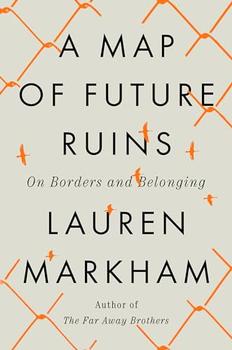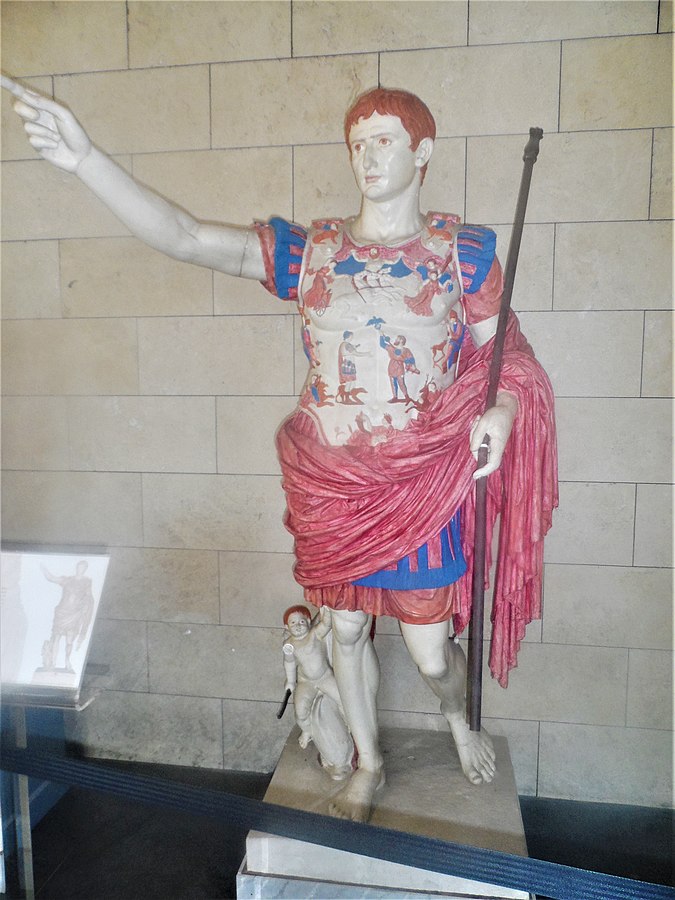Summary | Excerpt | Reviews | Beyond the Book | Read-Alikes | Genres & Themes | Author Bio

On Borders and Belonging
by Lauren MarkhamThis article relates to A Map of Future Ruins
 The hands of history have reshaped the Greek past for centuries, sculpting it into an idealized version credited with birthing a myriad of ideas and concepts, notably identity. Certain contemporary political currents claim that Hellenic identity was what we would today consider white, although Greece was a multiethnic society that did not have our modern concepts of race.
The hands of history have reshaped the Greek past for centuries, sculpting it into an idealized version credited with birthing a myriad of ideas and concepts, notably identity. Certain contemporary political currents claim that Hellenic identity was what we would today consider white, although Greece was a multiethnic society that did not have our modern concepts of race.
Groups promoting racist ideology have pushed the interpretation that the apparent lack of color and ornamentation in Greco-Roman classical sculpture, which is in fact due to the erosion of pigments over time, is indicative of a more advanced and sophisticated culture resulting from the supposed superiority of white Europeans. As Lauren Markham writes in A Map of Future Ruins, "classical iconography continues to be a touchstone of white supremacy today, building off the myth that ancient Greece is the taproot of so-called Western culture."
The author mentions Identity Evropa, a neo-Nazi organization founded in 2016 with the supposed aim of preserving Western identity and values in the face of multiculturalism. In one of their main propaganda campaigns, the group drank directly from classical iconography, trying to attract students by showing an idealized white past. They filled U.S. campuses with posters featuring Greek-and-Roman-looking statues, such as Hercules, David and Apollo. Slogans accompanying these images included "Keep Your Diversity We Want Identity" and "Let's Become Great Again," which evokes Donald Trump's presidential campaign slogan.
The former president has also drawn on classical imagery. In 2020, a draft of an executive order titled "Make Federal Buildings Beautiful Again" was leaked. It sought to establish neoclassical architecture as the preferred style for federal buildings. The draft argues that in designing Washington D.C. buildings, the founding fathers embraced the classical models of "democratic Athens" and "republican Rome" because they symbolized "self-governing ideals."
When on January 6, 2021, a group of Trump supporters invaded the Capitol, with its dome, frieze and neoclassical columns, they also made use of Hellenistic iconography. Several wore replicas of an ancient Greek helmet that evoked the Spartans, possibly in the belief that these warriors "saved the white race from destruction by delaying the advance of Persian forces at the Battle of Themopylae," according to Pharos, a website created to fight the growing use of classical culture by hate groups. These rioters saw themselves standing up for "Western civilization" and preventing the advance of an external political force threatening their status.
Classicists are pushing against this misuse of antiquity's ideas and symbols. According to Curtis Dozier, founder of Pharos and assistant professor of Greek and Roman studies at Vassar College, these views "all depend on the widespread assumption that Greco-Roman antiquity is admirable, foundational and refined. Thus any presentation that promotes uncritical admiration for the ancient world, by presenting it as a source of 'timeless' models and wisdom, has the potential to be complicit in white supremacy."
As classics and black world studies professor Denise McCoskey explains, the "idea that the Greeks and Romans identified as 'white' with other people in modern-day Europe is just a complete misreading of ancient evidence." In a similar sense, Western civilization as a concept did not exist until the late 19th century. Journalist Jen Pinkowski writes, "these two notions have joined forces to create a third: that white people need to defend Western Civilization, especially against what many in the white nationalist movements—and Trump—have called a foreign 'invasion.'"
Pretending to "resurrect ancient norms" is a tendency of white supremacist groups, says classicist Donna Zuckerberg. Svetlana Boym, whose work Markham considers instrumental to the writing of A Map of Future Ruins, expresses a similar idea when she speaks of "restorative nostalgia," a "project of reincarnating a nonexistent past when things were better, people and ideas more pure." But, like the white of the Greek sculptures, the "purity" of the classical is nothing more than illusion and invention, an attempt to put a mythologized past at the service of racist ideologies of the present.
Modern imagining of how a classical statue may have been colored
By Sheila1988 (CC BY-SA 4.0)
Filed under Society and Politics
![]() This article relates to A Map of Future Ruins.
It first ran in the March 6, 2024
issue of BookBrowse Recommends.
This article relates to A Map of Future Ruins.
It first ran in the March 6, 2024
issue of BookBrowse Recommends.
Your guide toexceptional books
BookBrowse seeks out and recommends the best in contemporary fiction and nonfiction—books that not only engage and entertain but also deepen our understanding of ourselves and the world around us.